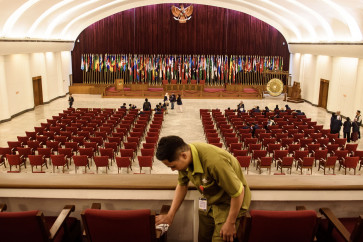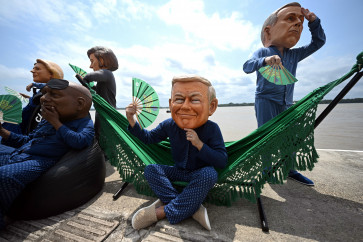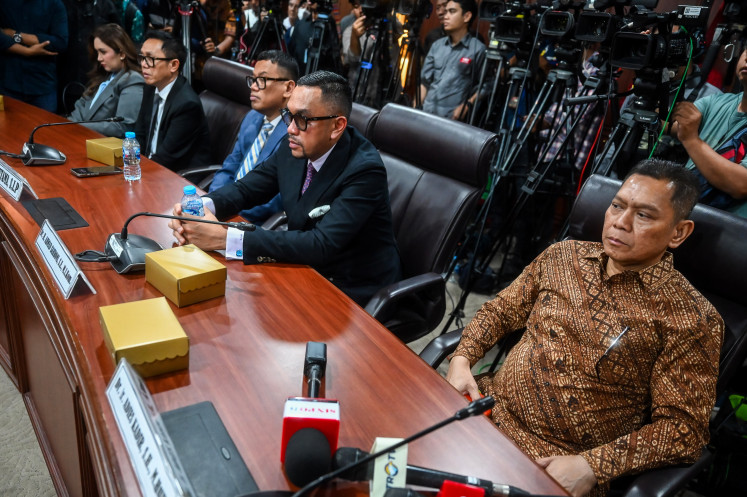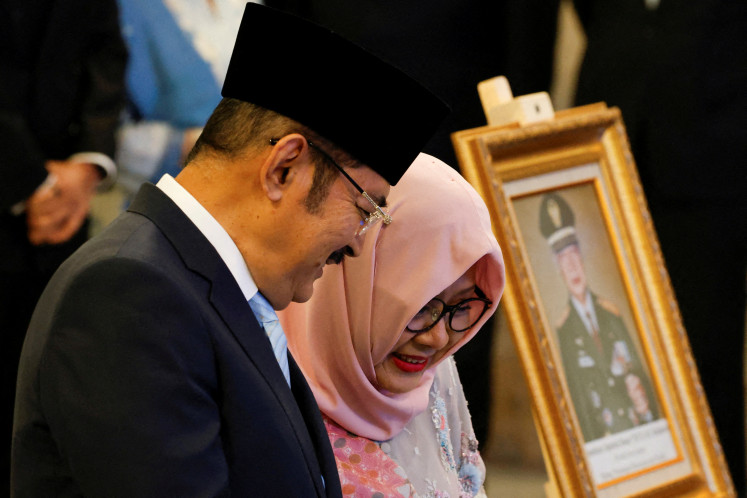Popular Reads
Top Results
Can't find what you're looking for?
View all search resultsPopular Reads
Top Results
Can't find what you're looking for?
View all search resultsGhost tales underline Jakartan love for absurdities
It was the story of a headless pastor all over again-a headless pastor, carrying his own head with a black dog following him wherever he goes
Change text size
Gift Premium Articles
to Anyone
I
t was the story of a headless pastor all over again-a headless pastor, carrying his own head with a black dog following him wherever he goes.
Legend has it that a watchman of the Jeruk Purut cemetery in South Jakarta encountered the decapitated pastor roaming amid tombs looking for his graveyard decades ago.
Much of the buzz on the Pastor sighting is still in the air, especially for those who easily buy into quixotic ghost tales passed around the city.
The bottom line is that such supernatural stories have become selling points in casual nocturnal chitchat among Jakartans, or for creative minds such as Koya Pagayo and Nanang Istiabudi, who have translated the myths into horror movies.
Indeed, the tale of the legendary headless Pastor of Jeruk Purut is one among the spine-tingling stories that have perpetuated myths, which are now entrenched in the minds of either non-believers or believers. But, the question is: How accurate are these stories?
"I have lived behind the Jeruk Purut cemetery since I was little, but that story is definitely a hoax," Umar, 40, a cemetery worker told The Jakarta Post.
Two middle-aged women working as graveyard mowers agreed with Umar's claim. "I don't know how that story became famous, but I have never encountered the so-called pastor," said one.
The eight-hectare cemetery has been expanding, with the most recent extension located at the northern part of the Jeruk Purut main road.
The old section of the cemetery, according to Umar, is facing space shortage, which means a burial space is sometimes forced to have up to three bodies from the same family.
Not that much farther from the cemetery is yet another sensational yet unproven Rumah Kentang (the Potato House) myth. The house gained its reputation because of the fried potato smell that the house emits.
The Rumah Kentang urban legend revolves around a story in which a toddler accidentally got into a large boiling cauldron full of frying potatoes. With that said, that was how the fried-potato smell arose, but some local vendors said they were unaware about the story.
"I don't know much the tale behind the house's name, only that people refer it as Rumah Kentang," said a noodle seller who has been in service for months right on the corner of Jl. Dharmawangsa 9, where the alleged haunted house is located.
Rumah Kentang is now home to the ACF International Network, a group of interconnected international organizations focusing on fighting poverty.
"No. I have not heard that story either. I have been working here for two months and never experienced such thing," said a security guard of ACF.
Based on the personal accounts above, there appears to be little compelling evidence to keep the fantasy ball rolling, especially for those who are curious about the city's urban folklores. But Jakarta offers a myriad of other ghostly stories that have been told throughout the ages to amuse and spook.
The West and North Jakarta municipalities, for example, will spark the interest of the undaunted to explore scary sites, such as the Jakarta History Museum in Kota and Goyang Bridge (the Wobbling Bridge) in Ancol, where ghostly apparitions are said to be common.
The Jakarta History Museum, also known as the Fatahillah Museum, is a historical building in Jakarta that speaks about the gruesome events that have spanned around 300 years of the colonial history in the city.
The museum houses a low-ceiling underground water prison where the Dutch used to imprison Indonesian insurgents and Dutch rebels - many who died of asphyxiation and diseases.
At night or during quiet days, people say an apparition of a man dressed in a colonial uniform, or the painful shrieks of prisoners are heard from the dungeon-according to the circulated urban legend.
At least not for Rohim and his wife who, since the 1980s, have been selling food and beverages in Cipta Niaga building-an abandoned two-story office building located a stone's throw from the museum.
"The building I live in is spookier than the museum next door," he said. "It's scarier because, unlike the museum, the Cipta Niaga building is not well cared for and is dark and empty", continued Rohim, who also showed The Post around the building.
"As long as your heart is clean, these *things' won't bother you," he said.
Rohim said he never encountered anything strange in the building.
If there is something true about the ghost tales, is the fact that they are good for the museum's business, especially for food vendors such as Rohim.
With these tales an alluring discourse among us, it is clear that there must be a cultural or scientific explanation about why many of us keep putting our blind faith in, or little skepticis, on the concept of the supernatural.
Ida Ruwaida Noor, sociologist from the University of Indonesia, explained that such a phenomenon was derived from our society's old, yet deep-rooted religious systems of animism and dynamism.
For instance, practices such as Kris (Sumatran and Javanese traditional dagger) maintenance, and horse-drawn carriages showering rituals have become part of the socio-religious traditions of our society, she said.










